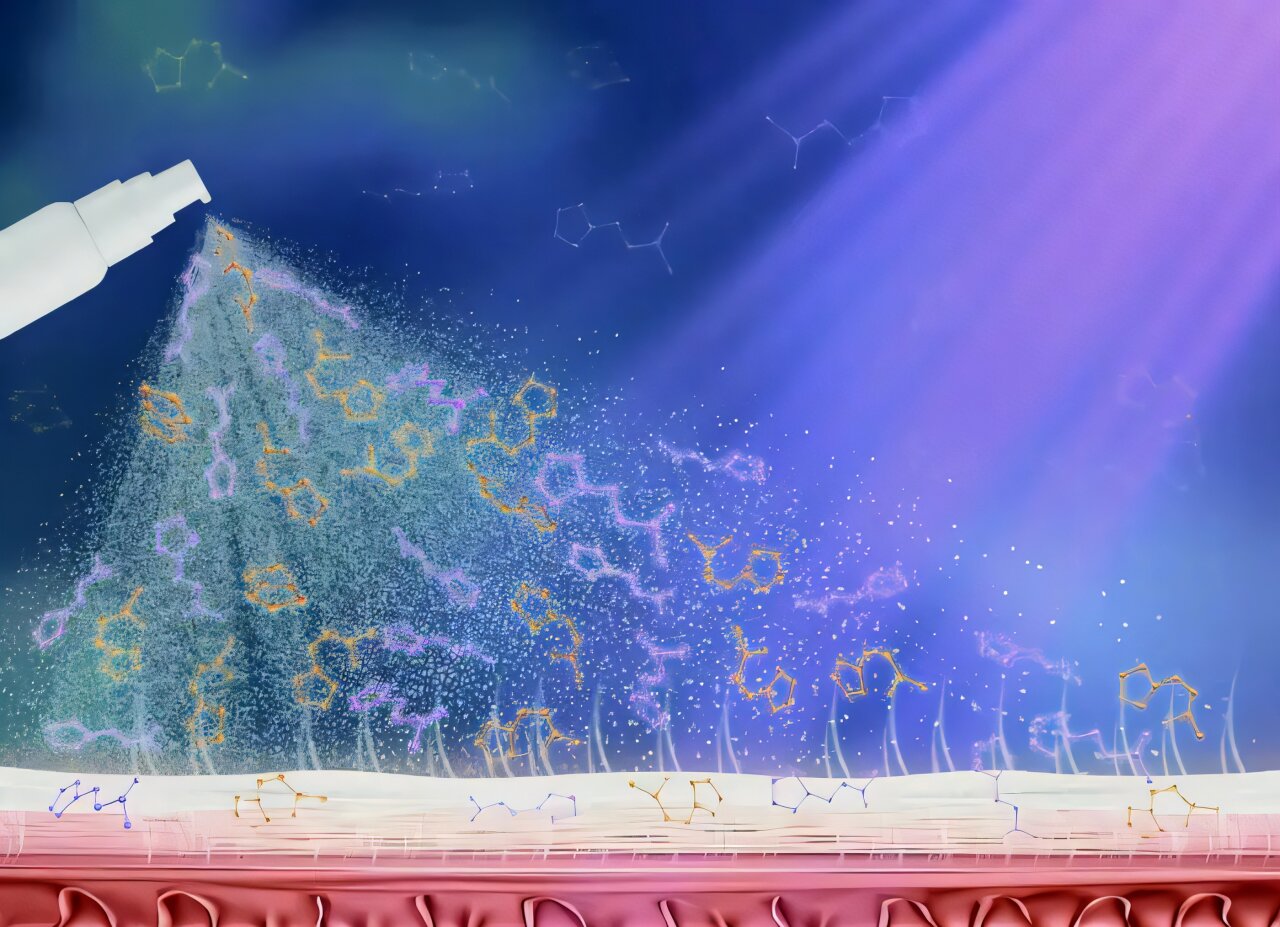A team of researchers led by professors Wybren Jan Buma at the University of Amsterdam and Vasilios Stavros at the University of Warwick (U.K.) have laid the groundwork for using urocanic acid and its derivatives as a novel class of sunscreen filters. Urocanic acid is a naturally occurring UV-A and UV-B absorbing compound found in the skin.
The team investigated the light-adsorbing, “sun-blocking” properties of urocanic acid and its derivatives, both in isolated molecules and in solutions. They present their results in two papers published in the journal Physical Chemistry Chemical Physics.
According to Wybren Jan Buma, professor of Molecular Photonics at the UvA’s Van ‘t Hoff Institute for Molecular Sciences, the two papers provide detailed insight into the light-conversion mechanism of urocanic acid.
“This is an excellent starting point for further optimization of its photoactive properties,” he says. “We envision many specific applications of urocanic acid and its derivatives, notably in safe UV filters.”
He expects that urocanic acid can meet the need for better, safer and more efficient sunscreen agents, replacing synthetic filters that are under discussion because of potential adverse effects on health and environment.
Natural sunscreen
Urocanic acid is in fact a natural sunscreen. It is present in the upper layers of the skin and absorbs both UV-A and UV-B radiation, although with a sun protection factor (SPF) of a mere 1.58 it is much less effective than synthetic sunscreens. A more important drawback is that upon UV irradiation, urocanic acid can transform into an immunosuppressive molecular variant.
“You might think that all this makes urocanic acid not fit for use in a sunscreen,” Buma says, “but it is definitely worth investigating. We think it is possible to design effective urocanic acid–based biomimetic sunscreens with a more favorable toxicological profile and optimize their photochemical and photophysical characteristics.”
First fundamental understanding
Buma and co-workers embarked on an extensive research program starting with high-resolution laser spectroscopy of isolated molecules and complemented by quantum chemical calculations. This led to a thorough understanding of how urocanic acid interacts with UV-light, and how this can be optimized by modifying the molecule.
The team is the first to describe the photochemical and photophysical properties on such a fundamental level, Buma says. “Urocanic acid has for a long time remained an enigma for experimental spectroscopists and theoretical chemists alike. Our studies have in this respect revolutionized the field.”
His team also established that previously reported studies suffered from unnoticed experimental side effects, leading to data that should be assigned to decomposition products rather than actual urocanic acid molecules.
Behavior in solution
To confirm the behavior of urocanic acid and its derivatives under conditions of practical application, the research team also performed studies in organic solvents and aqueous solutions. In cooperation with Prof. Vasilios Stavros and co-workers at the Warwick Center for Ultrafast spectroscopy (U.K.), they applied time-resolved spectroscopy on timescales spanning 18 orders of magnitude; from femtoseconds to hours.
These studies provided vital insight into how the photochemical and photophysical properties can be tuned not only by molecular modification but also by the solvents used. This paves the way for optimizing potential sunscreen formulations based on urocanic acid derivatives. Furthermore, the team identified stable derivatives that could also reduce the immunosuppressive effects of “plain” urocanic acid.
These are currently being investigated, says Buma. “We expect that the present studies will incite a renewed interest in the photoactive properties of this class of molecules. That will ultimately lead to novel sunscreen filters, but also to novel applications in areas where photothermal materials are employed.”
More information:
Jiayun Fan et al, Urocanic acid as a novel scaffold for next-gen nature-inspired sunscreens: I. electronic laser spectroscopy under isolated conditions, Physical Chemistry Chemical Physics (2024). DOI: 10.1039/D4CP02087A
Jiayun Fan et al, Urocanic acid as a novel scaffold for next-gen nature-inspired sunscreens: II. Time-resolved spectroscopy under solution conditions, Physical Chemistry Chemical Physics (2024). DOI: 10.1039/D4CP02088J
Provided by
University of Amsterdam
Citation:
Next-generation, nature-inspired sunscreens have a new molecular scaffold (2024, November 22)
retrieved 23 November 2024
from https://phys.org/news/2024-11-generation-nature-sunscreens-molecular-scaffold.html
This document is subject to copyright. Apart from any fair dealing for the purpose of private study or research, no
part may be reproduced without the written permission. The content is provided for information purposes only.


